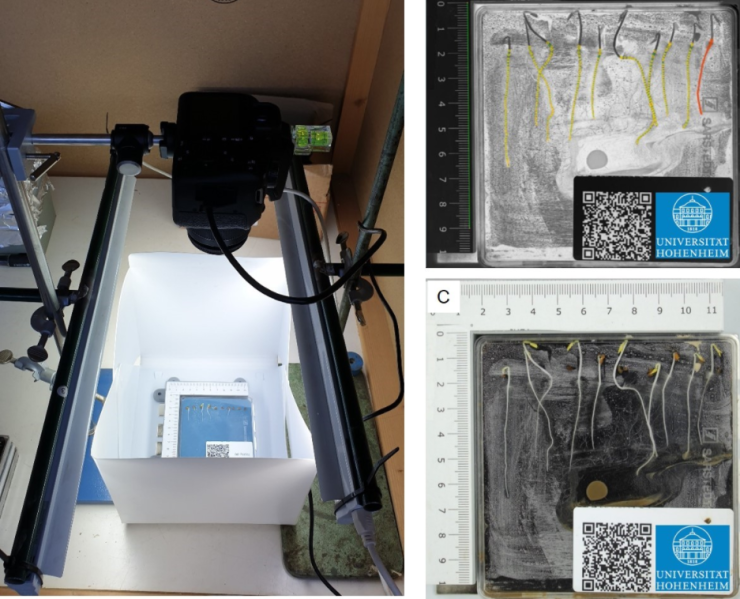

Phytotoxicity assessment of olive mill wastewater on seed germination of cress
The hot weather conditions in the Fès-Meknès region of Morocco lead to high water evaporation rates, nutrient loss from soil and the enrichment of dissolved salts on the soil surface. On the other hand, the region is one of the biggest olive oil producers in the country, which generates considerable amounts of olive mill wastewater (OMW), or also known as margine. The margine is inadequately stored or discharged into the environment without any treatment. Although margine may present an environmental risk because of its phytotoxic effects due to the high polyphenol content, among other reasons, its utilization as a fertilizer and a biopesticide is still under investigation. In this study, the phytotoxic effect of margine on the growth of cress (Lepidium sativum) was semi-automatically evaluated by analysing RGB images taken from germination tests according to DIN EN 16086-2. The cress seeds were sown under soil or perlite as a medium, which contained 0% (control), 5% (equivalent to a field application of 20 t/ha), 10% (40 t/ha) and 15% (60 t/ha) of margine, respectively. After 72 h, digital images of the cress were obtained, and the seedling growth parameters were determined by SmartRoot plugin from ImageJ software. See Fig. 1.
